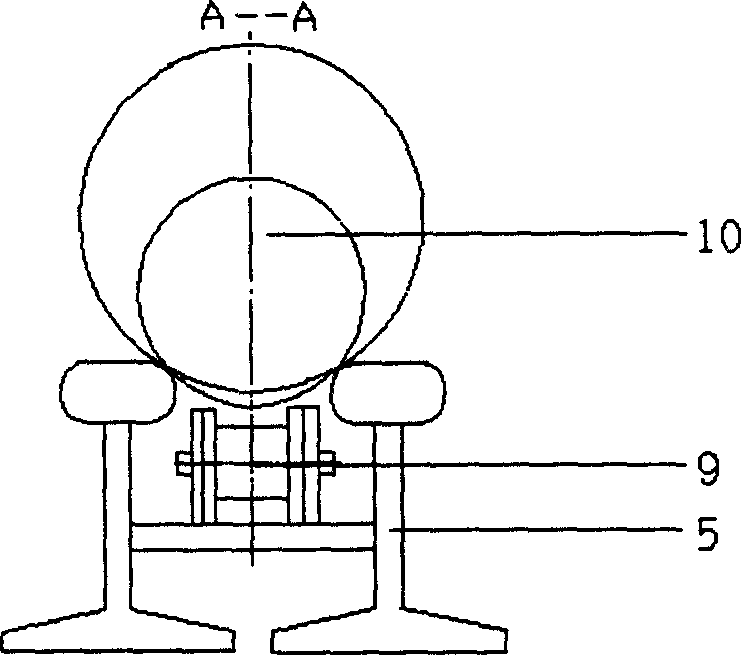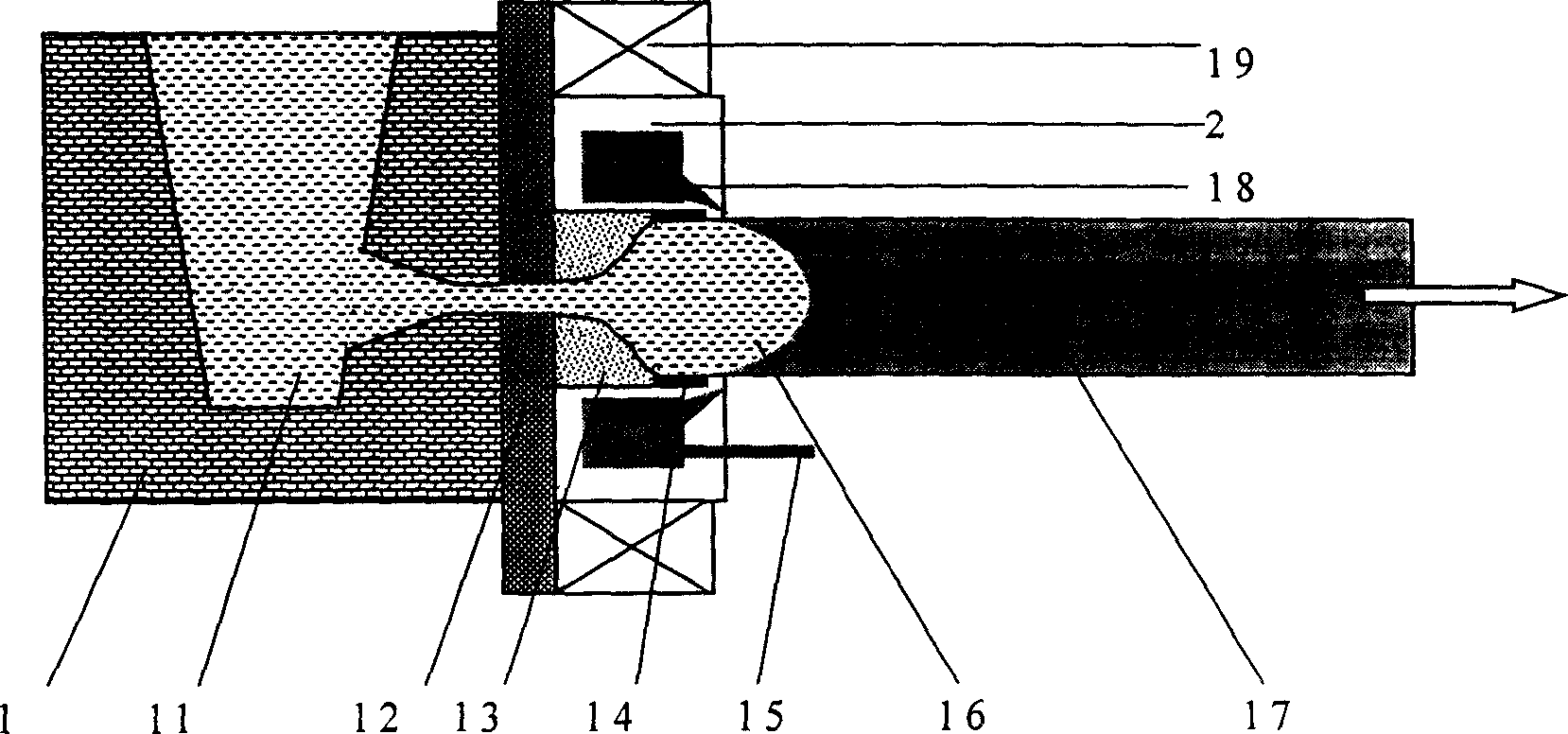Low-frequency electromagnetic field horizontal continuous casting process and equipment for aluminum alloy and magnesium alloy
A technology of low-frequency electromagnetic field and casting technology, which is applied in the field of light alloy casting technology and equipment, can solve the problems of aggravating the difference between the internal and external structure of the coarse grain and large ingot, the asymmetry of the liquid cavity intensifies the macro segregation, and the secondary cooling duration is short, etc. Achieve the effects of eliminating the deflection of alloying elements, reducing the amount of melt gas absorption, and simple structure
- Summary
- Abstract
- Description
- Claims
- Application Information
AI Technical Summary
Problems solved by technology
Method used
Image
Examples
example 1
[0027]Here, the quality of the billet during horizontal casting of the AZ91 magnesium alloy is taken as an example to illustrate. The invention has similar effects on other AZ series alloys and other magnesium alloys including ZK and AM series.
[0028] A. Comparison of process conditions
[0029] Generally speaking, due to the poor thermal conductivity of magnesium alloys, its drawing speed is lower than that of aluminum alloys of corresponding specifications. For aluminum alloy round rods with a diameter less than Φ100mm, the traditional horizontal casting speed is not higher than 180-220mm / min, and the casting speed of magnesium alloys of corresponding specifications is much lower. Tests have shown that the casting speed of Φ66AZ91 magnesium alloy ingot should not be higher than 180mm / min when no electromagnetic field is applied. By applying a low-frequency electromagnetic field (the induction coil current is 40A and the frequency is 30Hz), the casting speed can reach 345m...
example 2
[0049] A. Comparison of process conditions
[0050] Casting speed is one of the most important process parameters. The determination of its size must take into account the tendency of the alloy to crack, the shape and size of the billet, and other factors. In addition, it is also closely related to the structural parameters of the process piece. When the crack tendency or the ingot size is large, the casting speed should be small. On the contrary, the casting speed can be higher. In addition, reducing the casting temperature or improving and optimizing the structure of process parts such as crystallizers can also provide the possibility of increasing the casting speed. If the casting speed is too high, the crack tendency will be exacerbated due to the increase of the liquid cavity length, and the aluminum leakage accident will also be caused by insufficient primary cooling. Compared with magnesium alloys, aluminum alloys have a smaller crack tendency and can have higher castin...
PUM
 Login to View More
Login to View More Abstract
Description
Claims
Application Information
 Login to View More
Login to View More - R&D
- Intellectual Property
- Life Sciences
- Materials
- Tech Scout
- Unparalleled Data Quality
- Higher Quality Content
- 60% Fewer Hallucinations
Browse by: Latest US Patents, China's latest patents, Technical Efficacy Thesaurus, Application Domain, Technology Topic, Popular Technical Reports.
© 2025 PatSnap. All rights reserved.Legal|Privacy policy|Modern Slavery Act Transparency Statement|Sitemap|About US| Contact US: help@patsnap.com



